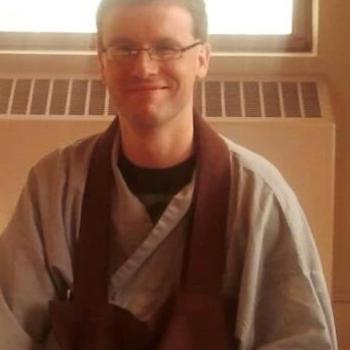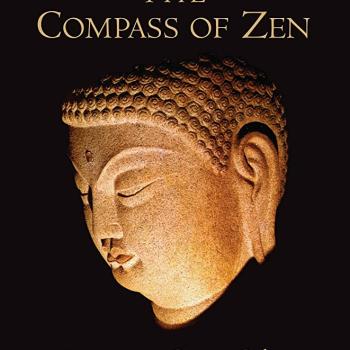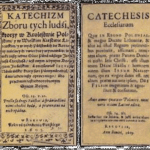I had a very vivid dream recently.
In the dream I was leading a retreat. I was in a place that I had never been before. There were a lot of people in attendance, some I knew and some that I didn’t. It all seemed to be going very well. Obviously if you’re leading a retreat you want it to be well attended. When no one comes to a retreat it feels like a disappointment. If just one person comes it can feel even worse. Anyway, I was thinking of this dream retreat as a big success.
And then everything suddenly fell apart. Some of the attendees started heckling me with statements about how this retreat wasn’t what they expected from me, they wanted something different. They wanted me to argue, to convince them that meditation is worth their time, that this retreat was not a total waste. They acted like making an argument was part of my responsibility. Their message was loud and clear.
It was: “You don’t belong here.”
We all have feelings like that sometimes. I’m not worthy, I’m not good enough, I don’t belong. I’ve definitely had these kinds of feelings. Sometimes feelings like these can ruin our day. Feelings of inadequacy are very powerful…and really something I struggle with in all aspects of my life.
I’ve felt like I didn’t belong in specific Buddhist communities before. I think making people feel like they belong might be a struggle a lot of Sanghas have. I’ve felt like I didn’t belong in certain contexts in day-to-day life in my job too. Have you ever gotten a promotion and thought “Why do I deserve this instead of someone else?”
This reminds me of a Zen story. It’s about a teacher who was just trying to do the best he could. He was trying to help spread Buddhism and he ended up being viewed as a failure and a loser. He was, to reference a song from my youth: “pinned down and abused for being strange.” He could have been celebrated for his efforts instead.
This is the story of a figure that fascinates me, Master Moheyan.
Moheyan lived in the 700s. He kind of had a story like what happened in my dream, a story of being pushed away and rejected.
He could be described as a failure, a loser, and a renegade. But also a risk taker, an adventurer, and a mystic. He was what was called a Meditation Master. He specialized in trances and formless meditations. He taught in the tradition that would come to be known as Ch’an (and later Zen). In his time there wasn’t really a Ch’an school. There was a tradition that people were teaching, a tradition that consisted of meditation instruction, teachings about Buddha Nature, and conferring Bodhisattva Precepts. Teachers like Moheyan didn’t have their own temples. There were no Ch’an temples. They would teach either in temples dedicated to other sects or in the streets and in the wilderness.
That context was important to the story. Moheyan traveled to Tibet. This was a time when Buddhism was flourishing in Tibet for the first time in a while. Moheyan traveled around and he had a lot of students. He taught that we all have Basic Goodness as our true nature, that the intent on the path is to turn our minds so we can see past our delusions, so we can see our true nature. He taught that we are all worthy and that enlightenment isn’t something we’re trying to find or achieve. Enlightenment is something we’re trying to uncover.
There was an event that’s famous in Tibetan history. The King Trisong Detsen felt like he had to figure out which was the real Buddhism, the meditation mastery and Buddha Nature teachings that Moheyan and other Chinese teachers were spreading, or another form, Vajrayana Buddhism, that had come from India. Vajrayana Buddhism advocated slowly accumulating merit and trying to become more and more enlightened. Vajrayana Buddhism was represented by a renowned scholar named Kamalashila.
So, a great debate happened between these two.
Kamalashila talked about some of the things we might associate with Vajrayana Buddhism today. He talked about how training needs to include memorizing sacred texts and elaborate forms of bowing. He also talked about preliminary practices that you have to do before you are really a serious practitioner. And he talked about bells and drums and feathers…all sorts of things that we might associate with Vajrayana Buddhism now. He said we have to do all these things. That’s what Kamalashila presented to the king.
Moheyan said something else. He was a meditation master and that’s what he talked about. He said that Enlightenment is our true nature. So, it’s there for us to see. We don’t need elaborate preparations, we just need to practice. He didn’t say that we don’t need to study. Some study is required, but he said that what we’re really trying to do is turn our minds. We need to turn our minds so that we can see the innate goodness that’s already there. That’s it. Enlightenment is our true nature.
Kamalashila the scholar said we have to engage in deep study and elaborate rituals. Moheyan the mystic said we’re basically there already and we just have to practice diligently and learn how to see through our delusions .
It’s said that Kamalashila won, after a very long debate.
Actually, Tibetan sources say Kamalashila won. Chinese sources say Moheyan won. That’s how things go sometimes.
(Fun fact: in the American version of King Kong versus Godzilla, King Kong wins. In the Japanese version Godzilla wins.)
But, either way, Moheyan was cast out of Tibet. It’s said that all of the Ch’an texts in Tibet were destroyed and it was declared that his teachings were an aberration, not authentic Buddhism and not worth anyone’s time.
He was told, “You don’t belong here.” And he was shamed and cast out. Two versions of the story go from there. Either Moheyan was so ashamed that he killed himself, or he simply left Tibet forever and faded into obscurity. I prefer the second version.
This was an important event in Tibetan history, as it did cement Vajrayana Buddhism as THE Buddhism of Tibet.
But although Moheyan left and Ch’an Buddhism was forbidden, he had a lot of students and they didn’t just disappear. In many ways they reformed Tibetan Buddhism. They took the teachings they had learned in the Ch’an tradition and they joined other sects. Buddha Nature and formless meditation practices are present in Tibetan Buddhism. And they’re present because of the great effort of Moheyan. I want to advocate for listing him as an important teacher in Tibetan history, instead of thinking of him as a failure and a loser.
Moheyan is a figure that fascinates me because he was brave. He went to a place that was dangerous and he stood up for what he believed in. And what he believed in was a simple thing. We’re all Buddhas.













